Abstract
An iron-binding compound was isolated from ethyl acetate extracts of culture supernatant fluids of Pseudomonas aeruginosa and was purified by successive paper and thin-layer chromatographic procedures. The purified compound was characterized by UV, visible, infrared, and fluorescence spectroscopy. The compound possesses phenolic characteristics, with little or no similarity to dihydroxybenzoates and no indication of a hydroxamate group. P. aeruginosa synthesized the compound during active growth in culture media containing less than 5 X 10(-6) M added FeCl3. When added to iron-poor cultures of P. aeruginosa, the compound promoted the growth of the bacterium and also reversed growth inhibition by the iron chelator ethylenediamine-di-(o-hydroxyphenylacetic acid).
Full text
PDF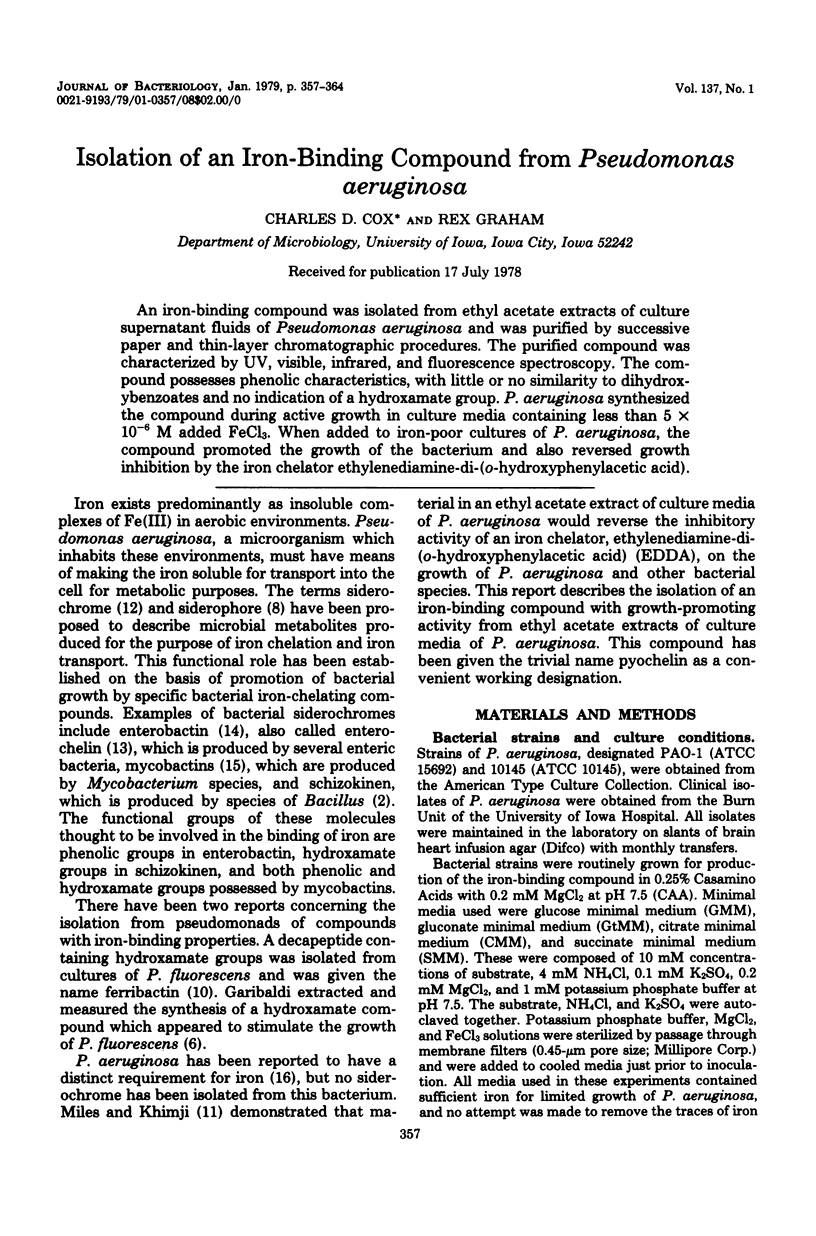
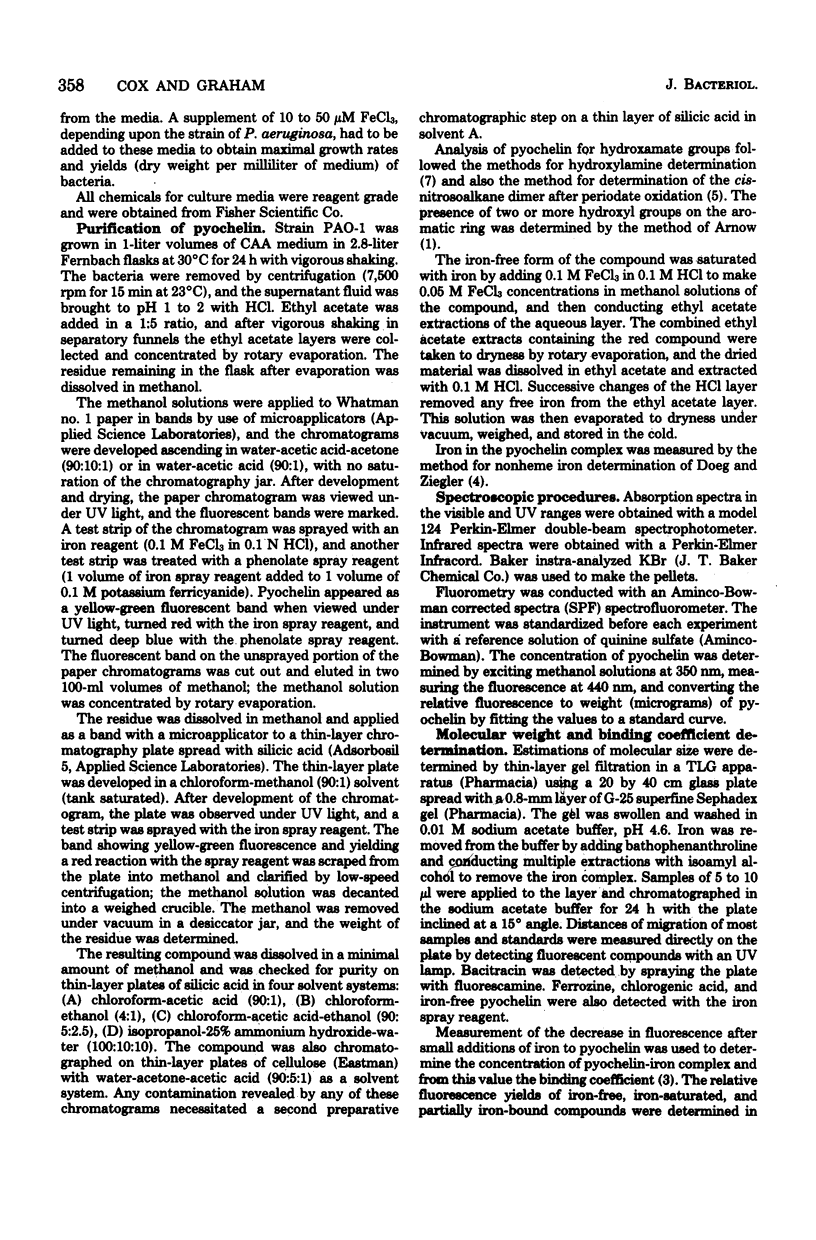
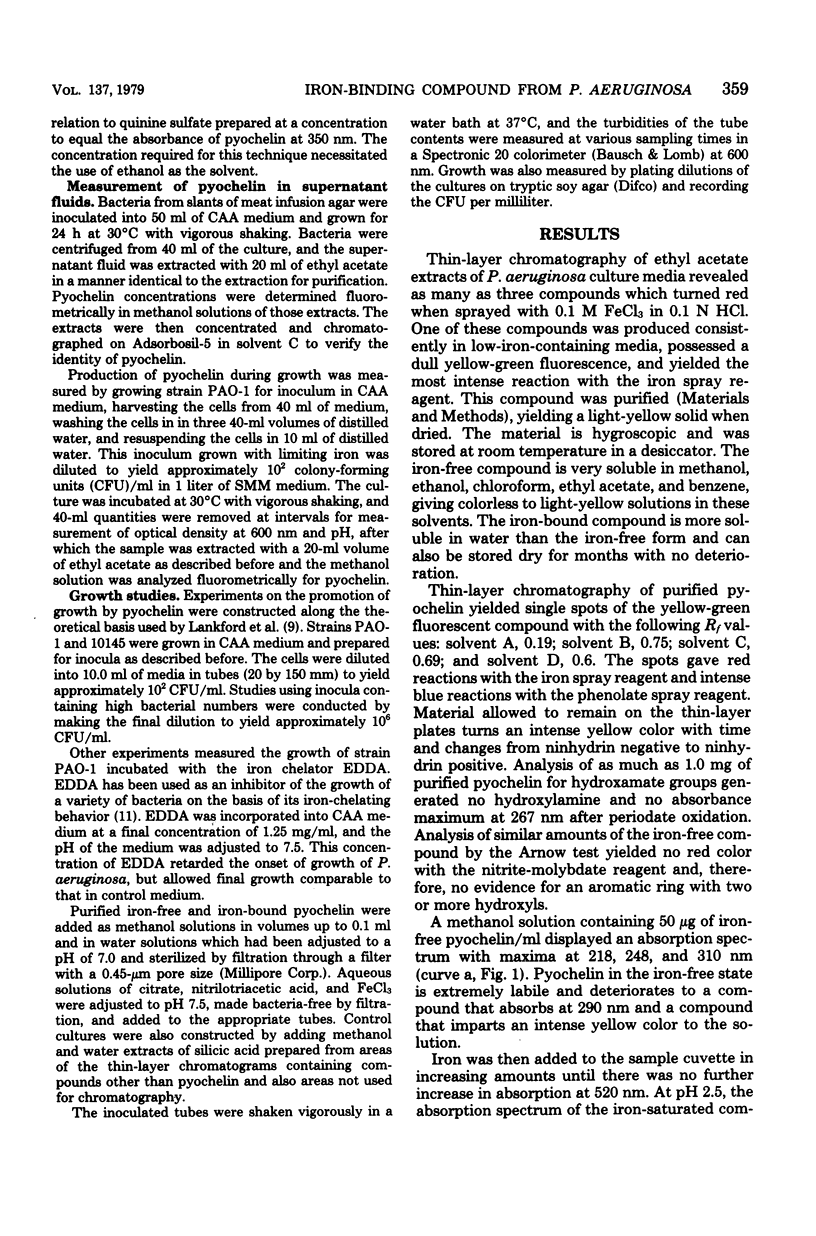
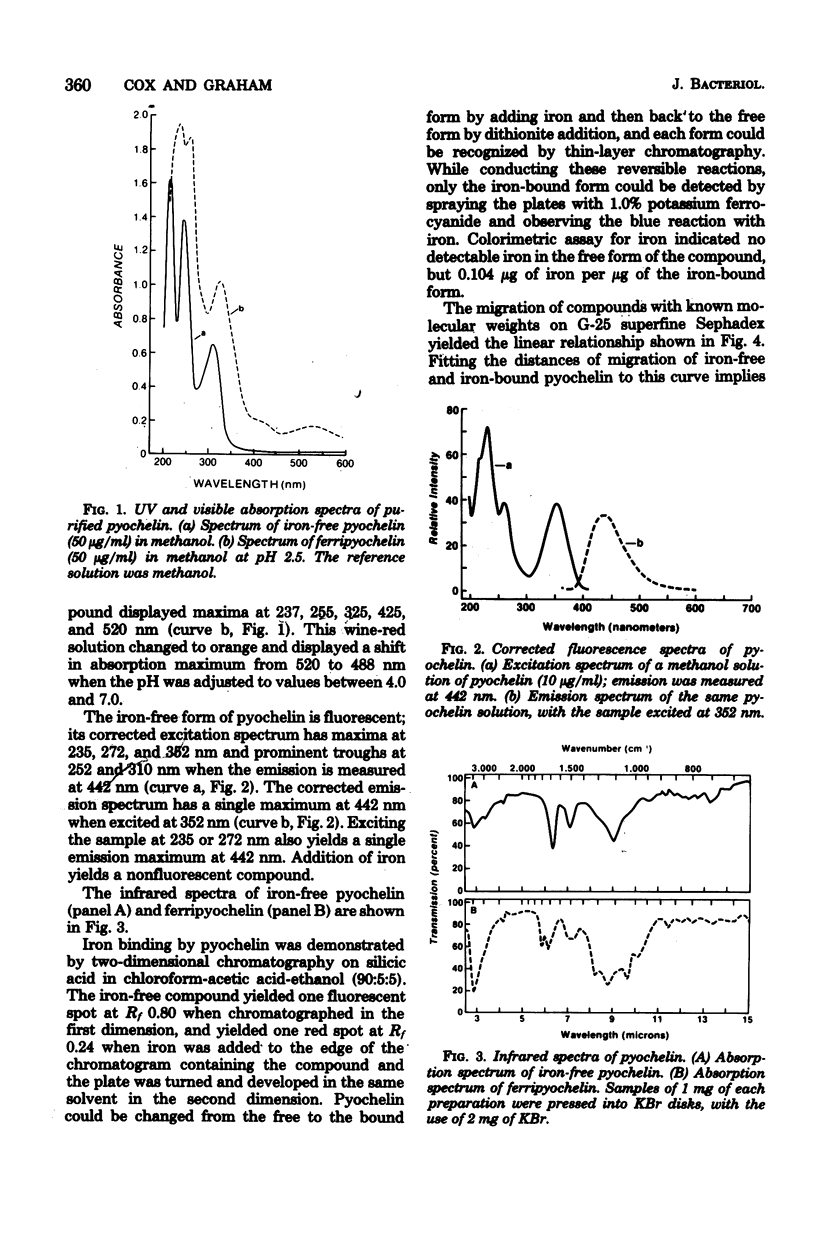
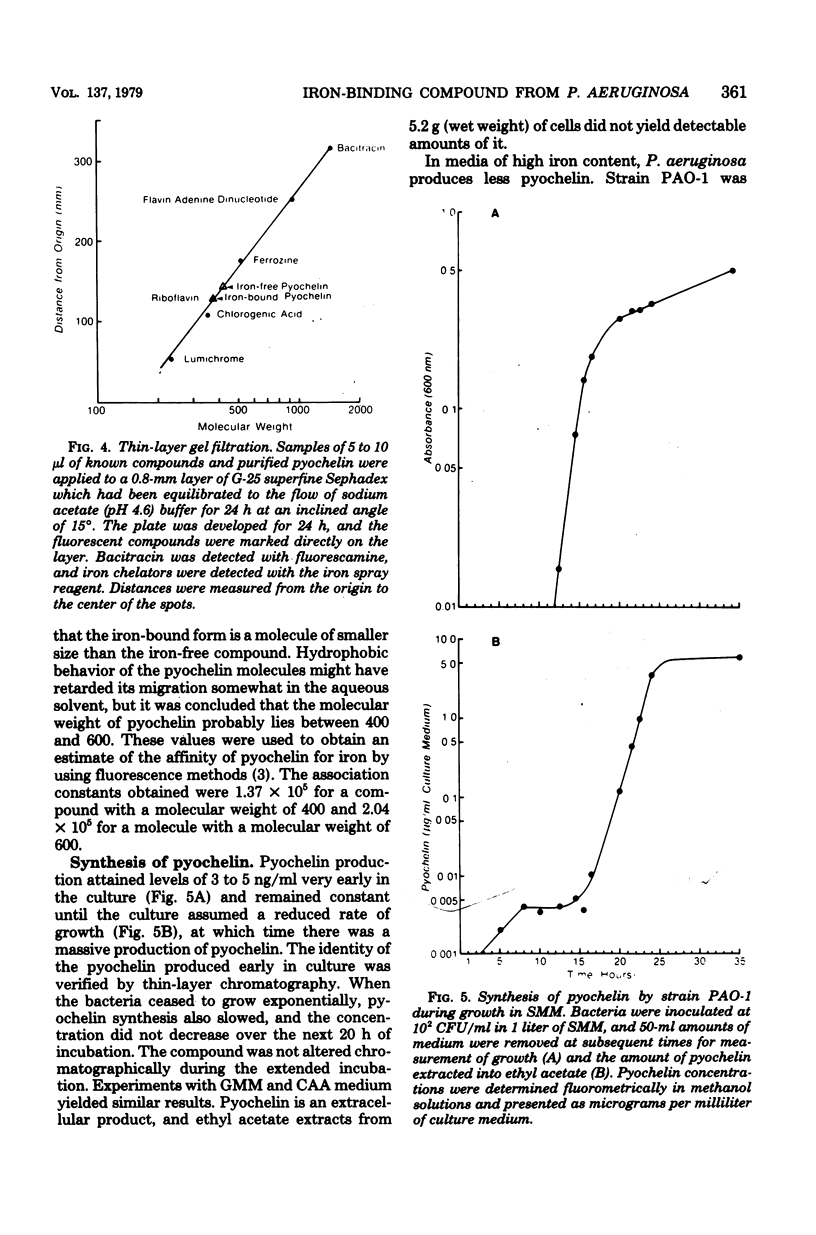
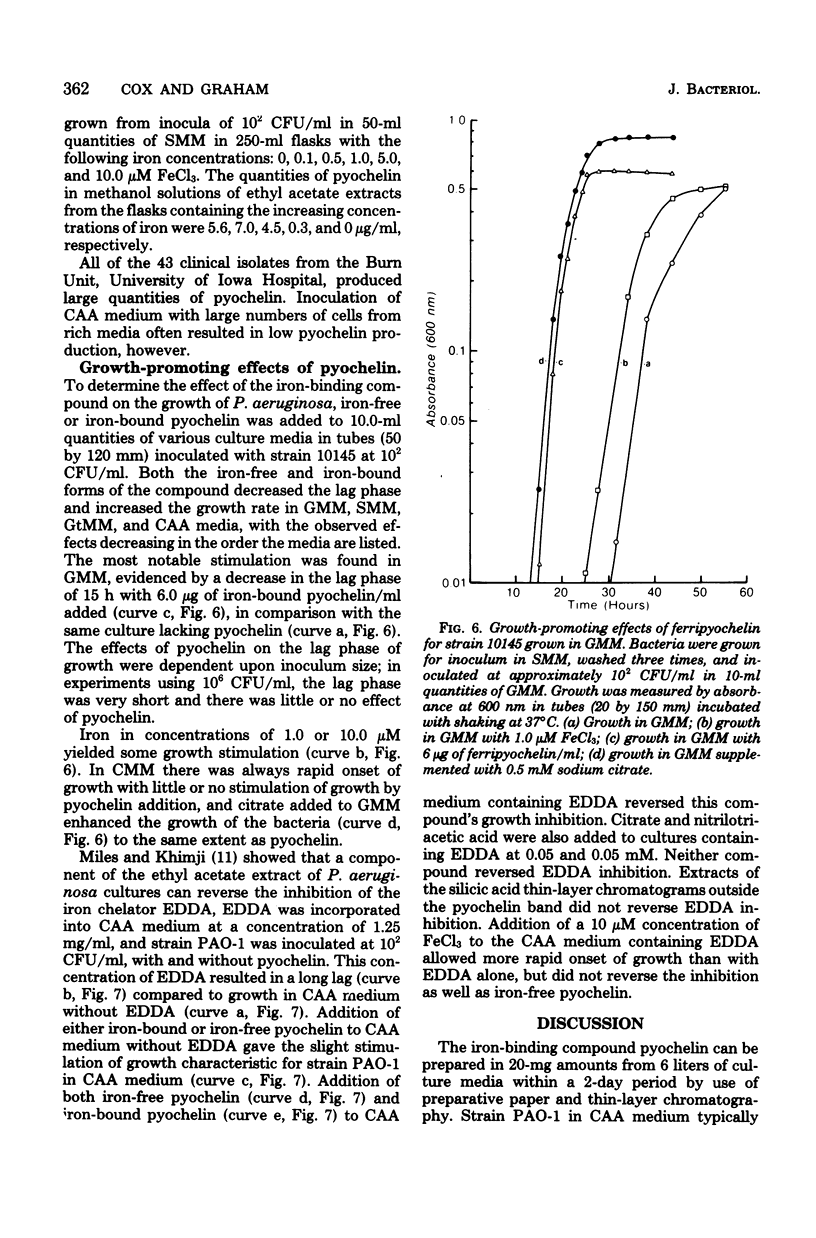
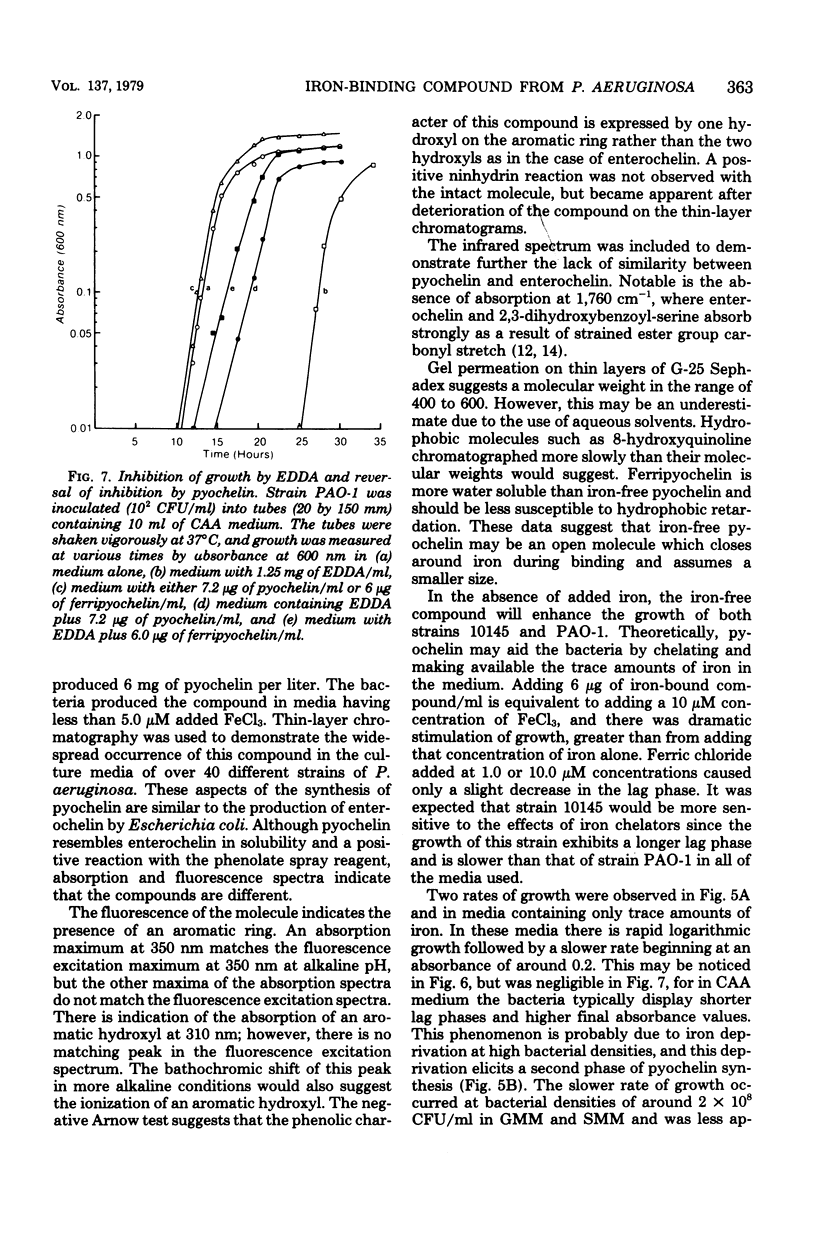
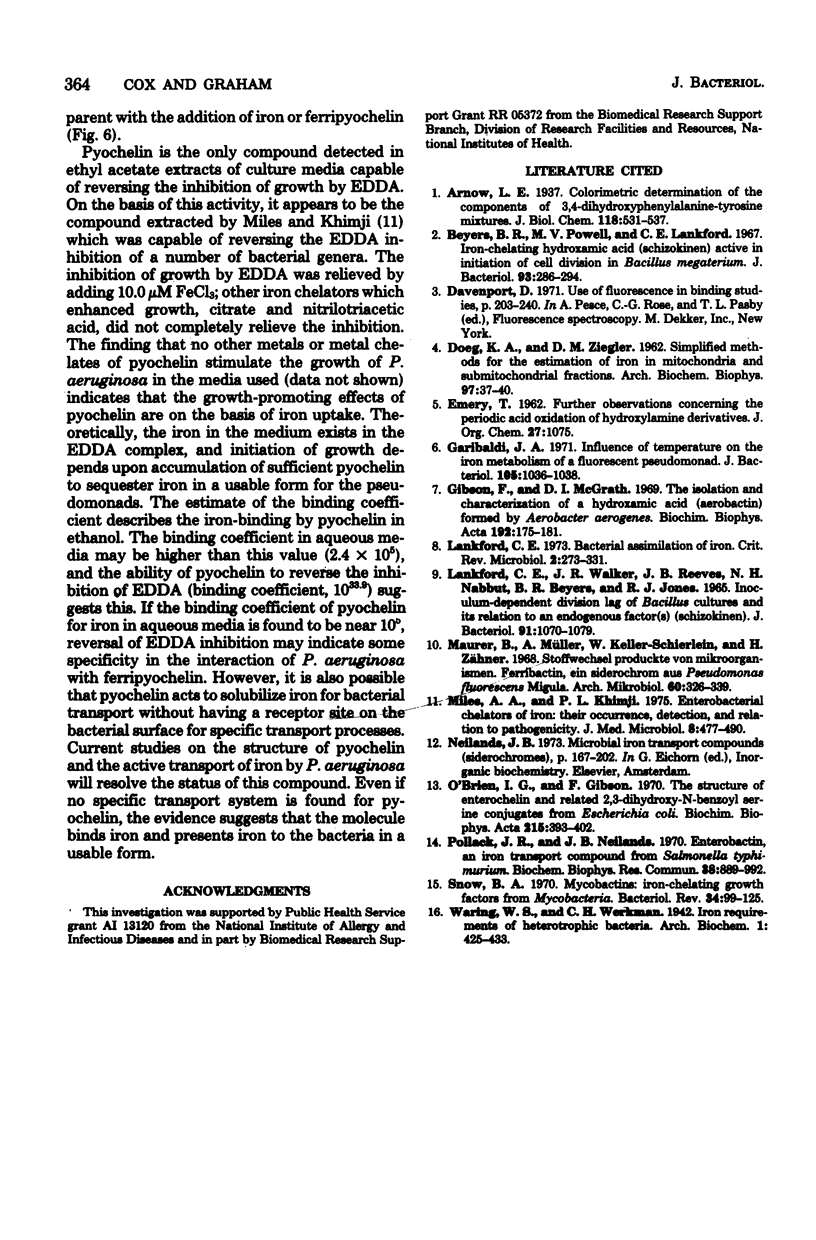
Selected References
These references are in PubMed. This may not be the complete list of references from this article.
- Byers B. R., Powell M. V., Lankford C. E. Iron-chelating hydroxamic acid (schizokinen) active in initiation of cell division in Bacillus megaterium. J Bacteriol. 1967 Jan;93(1):286–294. doi: 10.1128/jb.93.1.286-294.1967. [DOI] [PMC free article] [PubMed] [Google Scholar]
- DOEG K. A., ZIEGLER D. M. Simplified methods for the estimation of iron in mitochondria and submitochondrial fractions. Arch Biochem Biophys. 1962 Apr;97:37–40. doi: 10.1016/0003-9861(62)90041-3. [DOI] [PubMed] [Google Scholar]
- Snow G. A. Mycobactins: iron-chelating growth factors from mycobacteria. Bacteriol Rev. 1970 Jun;34(2):99–125. doi: 10.1128/br.34.2.99-125.1970. [DOI] [PMC free article] [PubMed] [Google Scholar]


